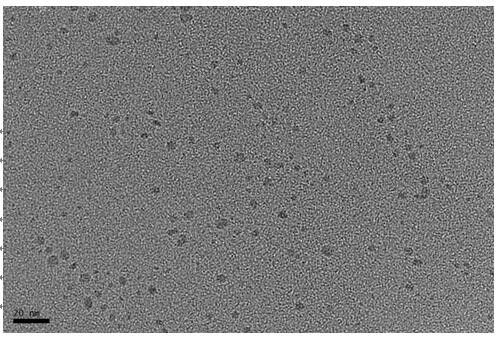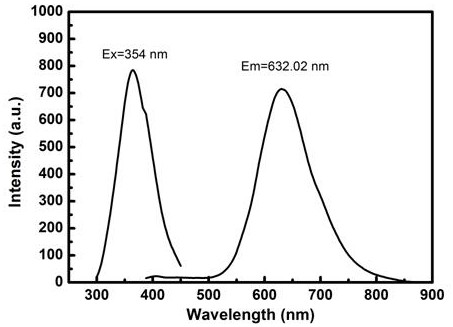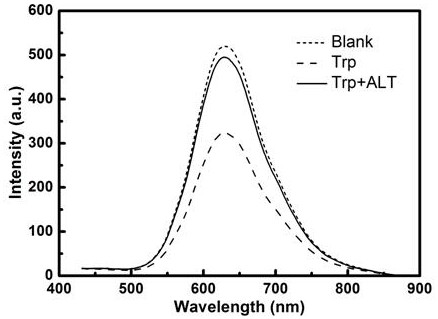Method for quantitative detection of alanine aminotransferase in solution based on copper nanocluster fluorescent probe
An alanine aminotransferase, copper nanocluster technology, applied in fluorescence/phosphorescence, measurement device, material analysis by optical means, etc., can solve the problems of high detection limit, low detection sensitivity, inaccuracy of detection purity, etc. Low output limit, simple synthesis method and good fluorescence performance
- Summary
- Abstract
- Description
- Claims
- Application Information
AI Technical Summary
Problems solved by technology
Method used
Image
Examples
Embodiment 1
[0025] The preparation of copper nanoclusters with glutathione as a stabilizer is carried out according to the following steps at room temperature:
[0026] (1) Preparation of 0.1 M copper chloride solution: weigh 1.7048 g CuCl 2 ∙2H 2 O was dissolved in 100 mL of high-purity water, fully dissolved for later use;
[0027] (2) Preparation of copper nanoclusters: at room temperature, 0.28 g glutathione was weighed and dissolved in 15 mL H 2 O, to which was added 450 mL CuCl 2 (0.1M), after fully reacting, add 0.1 g ascorbic acid (AA), then add 1 mL NaOH (1M), react for 1 h, until the white suspension is completely dissolved and turns into a light yellow clear solution, which proves that the copper nanoclusters form. By transmission electron microscopy (TEM) ( figure 1 ) It can be seen that the copper nanoclusters are uniformly dispersed and the particle size is small.
Embodiment 2
[0029] Copper nano-clusters are used as a method for fluorescent probe specific detection of alanine aminotransferase, which is characterized in that it is carried out according to the following steps:
[0030] (1) Preparation of tiopronin mother liquor: weigh 0.1000 g tiopronin and dissolve it in 5 mL of high-purity water; dilute the mother liquor to a low concentration of 1 mg / mL, and store it at low temperature for later use;
[0031] (2) Preparation of a series of different concentration solutions of alanine aminotransferase:
[0032] Prepare alanine aminotransferase solutions with concentrations of 1, 5, 50, 100, 500, and 1000 U / L respectively, and store them at low temperature for later use;
[0033] (3) Evenly disperse the prepared copper nanoclusters based on glutathione as a stabilizer in high-purity water, prepare a detection system with a concentration of 0.675 mM and a volume of 4 mL, and measure the concentration at this time using a fluorescence spectrophotometer...
Embodiment 3
[0039] 1. Refer to Example 1 for the preparation of copper nanoclusters using glutathione as a protective agent;
[0040] 2. Determination of excitation and emission spectra of copper nanoclusters stabilized with glutathione:
[0041] Disperse copper nanoclusters in high-purity water to measure the fluorescence excitation spectrum and fluorescence emission spectrum of the material, such as figure 2 As shown, the maximum excitation wavelength of copper nanoclusters is 354 nm, and under the excitation of the maximum excitation wavelength, the fluorescence emission wavelength is 632 nm.
PUM
 Login to View More
Login to View More Abstract
Description
Claims
Application Information
 Login to View More
Login to View More - R&D
- Intellectual Property
- Life Sciences
- Materials
- Tech Scout
- Unparalleled Data Quality
- Higher Quality Content
- 60% Fewer Hallucinations
Browse by: Latest US Patents, China's latest patents, Technical Efficacy Thesaurus, Application Domain, Technology Topic, Popular Technical Reports.
© 2025 PatSnap. All rights reserved.Legal|Privacy policy|Modern Slavery Act Transparency Statement|Sitemap|About US| Contact US: help@patsnap.com



